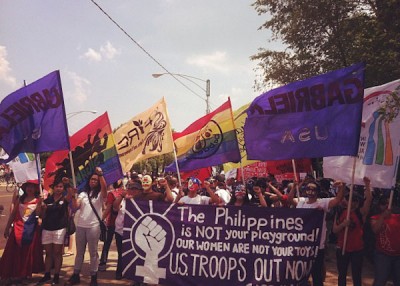
When the WTO protests happened in Seattle in 1999, I was a 17 year old teenager working for minimum wage at a Taco Time in West Seattle.
I was about to graduate high school but I didn’t think I’d be going to college. I thought I wasn’t smart enough to get a scholarship and my family didn’t have the money to pay tuition.
I was nobody and I was heading nowhere.
I remember that day though. Two young people walked into the restaurant wearing gasmasks. One of them asked for a glass of water and the other ordered something to eat. I asked them why they were wearing masks, which they had taken off to reveal their sweaty, tired faces. “Because of the teargas,” one said. “We were running from the police.”
They didn’t stay long; their presence seemed to make my manager and some of the customers uneasy. But I remember wanting to ask them more: why the police were after them, why the teargas?
Fast forward to 2012. I’m 30 now, deeply involved in politics, and I know a little more about teargas.

Last weekend, I flew to Chicago for the G8/NATO Summit protests. I was there with my kasamas (the Tagalog word for comrades) from Pin@y sa Seattle, a collective of women that works for the human rights of Filipinas globally (Pinay is a term for female-identified Filipina women. We use the “@” symbol because it is a queer-friendly organization.)
When word got out that the G8 Meeting and NATO Summit were happening at the same time in Chicago, kasamas from all over the world made plans for one of the biggest protests since the WTO. The G8 summit was moved to Camp David (for fear of protests). But the protests went on anyway.
“Obama inviting NATO and G8, which represents war and militarism on one side and imperialist globalization on the other side, to meet back to back… I think that’s really critical for us to understand that’s two sides of the same coin.” explained Bernadette (Berna) Ellorin, the Chair of BAYAN USA, an alliance of progressive Filipino groups in the U.S., before the protests kicked off on Sunday.
I agree with her sentiments, but personally, I came in hopes of finding my place in this movement. I’ve learned to organize and challenge authority with the best of them, but sometimes I don’t feel that far away from my 17 year old self. I’m still trying to figure out who I am and where I’m going, and Pin@y is helping me do that.
When we landed in Chicago, the taxi driver who took us to our hostel told us that the Mayor had advised residents to take a two-day holiday to avoid the crowds of protestors.
Cop cars followed us in the streets. We saw “FBI surveillance” pop up in the hostel’s wifi network (we’ll never know if it was a prank or scare tactic or if the FBI actually calls it that). There were reports of raids on other hostels and the homes of march organizers in the days leading up to the summit.
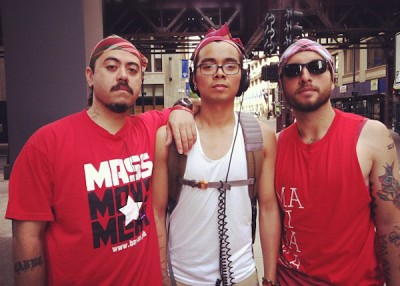
All this enforcement made me nervous. I had participated in several protests – even organized sit-ins and actions myself – but this was my first time attending one on this scale. It made me think of those WTO protesters, but it also reminded me of the police reaction to protests in the Philippines.
But I was not just in Chicago for the protest; I also came for the founding of the US chapter of the International League of People’s Struggle (ILPS) – an organization formed in 2001 as a way to build international solidarity against imperialism. ILPS has over 350 member organizations from over 40 countries. It grew out of the grassroots resistance to the Seattle WTO meetings in 1999.
We were joined via Skype by the ILPS chair, Jose Maria Sison, who is also the founding leader of the Communist Party of the Philippines. He told us that having a chapter “in the belly of the beast,” is important. That until the American people realize what their government is doing to the world and rise up, things will not change.
We were also joined by other noteworthy activists like Philippines Congresswoman Emmi De Jesus of the Gabriela Women’s Party, a women-led political party in the Philippines. Fred Hampton Jr., whose father, the Black Panther Fred Hampton was assassinated by the FBI, spoke of state sanctioned racism and violence against oppressed peoples.
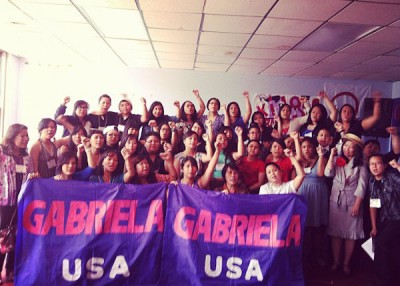
The Centro Autónomo, a community space in Albany Park came to life with banners, murals, and hundreds of activists from all over the world. Representation spanned from the Bay to LA to New York to DC to Chicago to Seattle, from the Philippines to Canada to Venezuela. People were preparing signs for the protests, practicing songs for cultural night, passing resolutions, and keeping kasamas hydrated and fed with everything from Filipino food like lechón (roasted pig) and dinuguan (pork blood stew) to chicago deep dish pizza.
I was sharing a hostel room with Norma Timbang (fondly referred to as Tita Norma), a human rights organizer and a teacher of the UW School of Social Work. I was having a hard time processing everything and I told Tita-Norma so as we went out together to get Halo-Halo (a dessert from the Philippines).
I told her how overwhelmed I felt, talking about US imperialism and violence around the world for hours on end. As a newcomer still learning my part in it all, I was affected by the intensity of the information download.
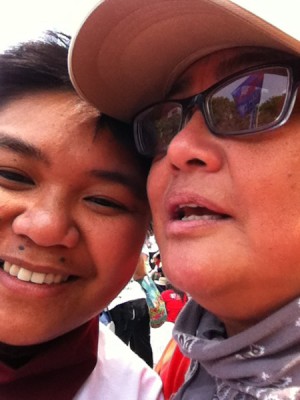
“We’re here in the middle of a place that makes all the rules and takes all our power,” she told me. “So if we have this [ILPS] chapter here I feel like we can connect with the rest of the world on making change. We can no longer work in a vacuum. We can no longer work issue to issue. We have to cross issues. We have to cross social identities. We have to cross oceans.”
On Sunday, the day of the biggest protests finally arrived. It was the hottest day yet – 90 degrees by the afternoon. When we arrived at the meeting spot, we were warned of a suspicious person who said he was a reporter, and was pressing people for information. We suspected he was an undercover cop because when he was confronted he quickly left.
There were cops on every corner, some with horses and others with big batons. As we got deeper into the march, there were police in full riot gear. We were told to wear our tubaos (handkerchiefs) in case the police used tear gas, and ear plugs against percussion grenades.
Our Seattle delegation joined with Bayan USA, Gabriela USA, the ILPS contingency and our brothers and sisters from the Organization to Free Palestine movement. The songs and chants echoed off the skyscrapers of downtown Chicago. By the end of 2-mile march, our voices were coarse and legs wobbly, but there were smiles all around. Our hearts were filled with revolution.
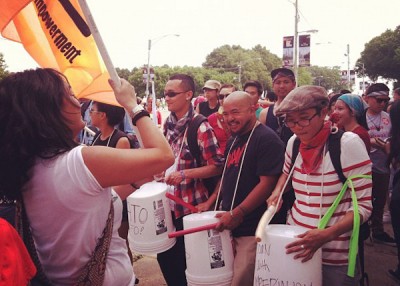
The next day, as we had breakfast by our hostel, we finally saw the news footage. It focused on rioting that happened after the march and Black Bloc party clashes with police. A few of us turned away from the TV as they showed a man beaten man by police lying on the ground.
No coverage of us or the crowd of tens of thousands marching down Michigan Street chanting: “Long live International Solidarity!”
But we kasamas were not disheartened. We were there with thousands of others protesting US imperialism and militarism. Our movement will grow as ILPS and the Occupy movements have been growing. And when it gets tough, when I feel alone, frustrated and insignificant, I’ll remember what Berna from BAYAN USA told me:
“This is really about all of us. This is about the people who are protesting [and] who are observing on the sidelines. We’re doing this because we are the 99% and we’re all affected by this crisis. I hope that those who are on the sidelines and unsure where they stand, I hope they choose to side with us, for themselves, for their own lives and livelihoods.”
 Jill Mangaliman is a homegrown community organizer for racial, gender and environmental justice. She’s a jill-of-all-trades, manabout town who also likes karaoke.
Jill Mangaliman is a homegrown community organizer for racial, gender and environmental justice. She’s a jill-of-all-trades, manabout town who also likes karaoke.

